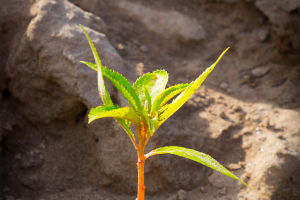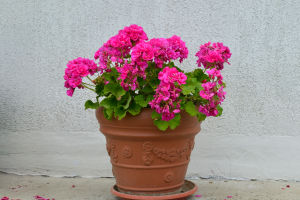Plant Plumbing Uncovered
Hey Lykkers! Ever wondered how a tall tree gets water all the way to its top leaves—or how a sunflower sends sugars down to its roots?
It all comes down to a plant's hidden transport system: vascular tissues. These are like nature's built-in pipelines that help plants move essential fluids, just like highways for water and sugar.
In this guide, we'll explore the two main players in this fascinating system—xylem and phloem. You'll get to know how they work, where to find them, and what makes each one special. Whether you're growing herbs on a windowsill or just love the clever tricks of nature, this journey through the plant's inner network is for you.
Part 1: Xylem – The Water Highway
Let's begin with the task of lifting water from roots to the topmost leaf. It might seem like magic, but once you learn about xylem, it becomes even more amazing.
What Xylem Does Best
Xylem is responsible for transporting water and dissolved minerals from the roots upward through the plant. You can picture it like a one-way straw that keeps everything hydrated—even in tall trees like redwoods. It's built from long, hollow cells stacked like pipes, which create a continuous path for water to move.
How It All Moves Upward
Here's the fun part: water in xylem moves without pumps. Instead, it uses something called transpiration. When water evaporates from a plant's leaves, it pulls more water upward like a chain from root to tip. It's a silent, constant process that keeps leaves fresh and firm.
When you water a plant, you're setting off this entire chain reaction. And if you've ever noticed wilting leaves, it's probably because the xylem isn't able to bring up enough moisture.
Where to Spot Xylem
You can often find xylem in the center of stems, roots, and even leaves. In woodier plants, it becomes part of the structure—that's how trees grow those solid trunks. In fact, much of what you call "wood" is actually made of xylem tissue.
Next time you break a celery stalk and see the stringy lines inside, you're catching a glimpse of its vascular bundles—including the xylem at work.
Part 2: Phloem – The Sugar Express
Now let's switch to the sweet side of plant life. Just like humans need to move energy from where it's made to where it's needed, so do plants. And that's where phloem comes in.
Phloem's Super Sweet Job
Phloem is the tissue that transports sugars—produced in leaves during photosynthesis—to other parts of the plant. This includes roots, growing buds, flowers, and fruits. Unlike xylem, phloem works both upward and downward, depending on where the energy is required.
Think of it like a flexible delivery service that sends out sugar “packages” wherever they're needed to keep the plant growing and healthy.
How the Flow Works
To move these sugars, phloem uses living cells called sieve tubes. These cells work together with helper cells to push the sugary solution—called sap—through the plant. This movement is known as translocation.
You can actually see phloem in action if you watch how nutrients move away from leaves after trimming. The plant quickly redirects its sugar flow to adapt to changes.
Where to Find Phloem
Phloem is found just outside the xylem in most plant stems. Together, they're bundled into structures called vascular bundles. In young plants or herbs, these bundles form visible lines running through the stems and leaves—nature's blueprint for inner transport.
When insects like aphids feed on sap, they usually tap directly into the phloem—because that's where all the sweet energy is flowing.
Plants may not have roads or plumbing like we do, but their vascular tissues—xylem and phloem—are brilliantly designed systems that keep everything running smoothly. Xylem lifts water skyward using pure physical forces, while phloem spreads sugar-rich energy wherever it's needed. Together, they create a quiet but powerful flow that fuels all plant life.
So next time you sip some tea or admire a garden bloom, remember: behind every green leaf is a complex transport system working non-stop. Nature's inner mechanics are not just smart—they're inspiring. And now, Lykkers, you're in on the secret.
-
 Plant Hormones at WorkEver wondered how plants know when to grow, flower, or drop their leaves?
Plant Hormones at WorkEver wondered how plants know when to grow, flower, or drop their leaves? -
 Blooms That Brighten LifeWhat makes flowers so magical in every garden and room?
Blooms That Brighten LifeWhat makes flowers so magical in every garden and room? -
 Water Plants RightWatering plants wrong? Learn simple expert-backed tips to avoid overwatering or underwatering your green friends!
Water Plants RightWatering plants wrong? Learn simple expert-backed tips to avoid overwatering or underwatering your green friends!
Copyright © zogu 2021 - 2025. All Right Reserved.